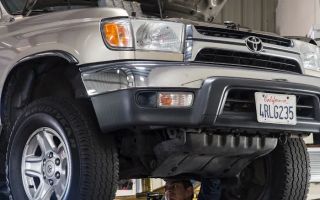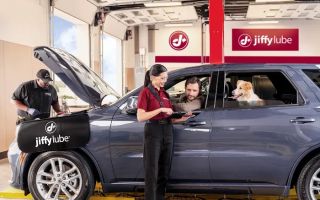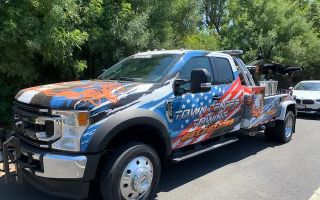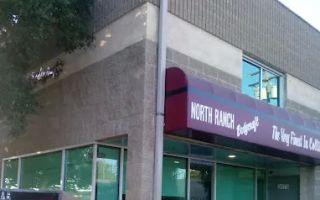How to Fix a Squeaky Car Belt: A Complete Guide for Car Owners
1. Understanding the Squeaky Car Belt
One of the most annoying sounds a car can make is a squeaky or squealing belt. If you've ever been behind the wheel and heard a high-pitched sound coming from the engine area, it's likely your car's belt system. A squeaky car belt can be distracting and worrying, but it's a common issue that many car owners face. The sound typically comes from the serpentine belt or the drive belt, which powers several components of your vehicle, such as the alternator, air conditioning compressor, and power steering pump. If you're like me and have experienced this squeaking sound, you know how irritating it can get—especially during early morning drives or when it's particularly quiet outside.
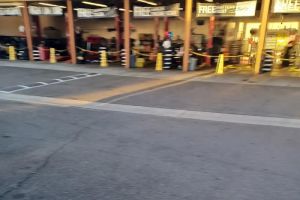
Firestone Complete Auto Care
1933 N Placentia Ave, Fullerton, CA 92831, USA
2. Why Does My Car Belt Squeak?
Before jumping into fixing the squeaky belt, it’s important to understand why the noise is happening. A squeaky belt usually occurs when there is excess friction or a lack of lubrication between the belt and the pulleys. Here are the common causes of this issue:
- Worn-out Belt: Over time, belts lose their elasticity and can become cracked or frayed, which causes them to squeak when they move over the pulleys.
- Loose Belt: If the belt is too loose, it will slip on the pulleys, creating that annoying squeaking sound.
- Dirty Belt: Dirt, oil, or debris buildup can cause the belt to slip and make noise.
- Moisture: Water or humidity can also cause temporary squeaking, especially in rainy conditions or after washing the car.
3. How to Identify the Source of the Squeak
If your car is making a squeaking noise, it’s essential to pinpoint the source. Here’s a simple method I’ve used in the past to identify whether the squeak is indeed coming from the belt system:
- Start the Car: Start your engine and listen closely to where the squeaking sound is coming from. If the noise is persistent even when the car is idle, it's likely the belt.
- Inspect the Belt Visually: Open the hood and inspect the serpentine or drive belts for any visible signs of wear, cracking, or fraying. Check if they are properly tensioned and aligned with the pulleys.
- Spray the Belt with Water: Lightly spray some water on the belt while the engine is running. If the squeaking stops temporarily, it’s a sign that moisture might be causing the issue.
4. How to Fix a Squeaky Car Belt
Now, let’s dive into fixing the squeaky belt. While it’s always a good idea to seek professional help, there are a few steps you can take to try and fix the problem yourself. Here’s a step-by-step guide based on my experience:
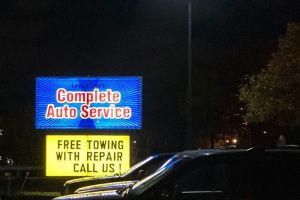
Complete Auto Service of Ann Arbor
2890 Jackson Ave, Ann Arbor, MI 48103, USA
Step 1: Tighten the Belt
If the belt is loose, it may slip and cause squeaking. A loose belt can often be tightened using a wrench or belt tensioning tool. First, locate the tensioner pulley (this is usually a small spring-loaded pulley), and adjust it to tighten the belt. Refer to your car’s manual for the proper tensioning procedure to ensure the belt is neither too tight nor too loose.
Step 2: Clean the Belt
Sometimes dirt and grime build-up on the belt can create friction, leading to squeaking. Clean the belt with a soft cloth or brush to remove any debris. Be sure to clean the pulleys as well, as accumulated dirt on these components can exacerbate the problem.
Step 3: Lubricate the Belt (If Applicable)
In some cases, lubricating the belt might help reduce friction and eliminate the squeak. However, this method is controversial and should be used with caution. Using belt-specific lubricants can sometimes help, but avoid applying too much, as excessive lubrication can make the belt slip and worsen the problem. If you decide to lubricate, follow the instructions carefully.
Step 4: Replace the Belt
If none of the above solutions work, or if you notice significant wear or damage on the belt, it may be time for a replacement. Replacing a worn-out belt is essential for maintaining the performance of your vehicle. To replace the belt, you’ll need to remove the old one by loosening the tensioner pulley. Then, install the new belt and ensure that it is properly aligned and tensioned. If you’re unsure about doing this yourself, I recommend seeking the help of a professional mechanic to ensure the job is done correctly.
5. Preventing a Squeaky Belt in the Future
While fixing a squeaky belt is important, prevention is always better than a cure. Here are some tips to keep your car's belt system in good condition and avoid the dreaded squeak in the future:
- Regular Inspections: Check your belts every 30,000 miles or so to ensure they are in good condition. Look for cracks, fraying, or signs of wear.
- Keep It Clean: Regularly clean the belts and pulleys to remove any dirt or debris that may cause friction.
- Use Quality Parts: When replacing a belt, make sure you choose high-quality parts that are recommended for your vehicle model.
- Avoid Moisture: If you live in a particularly rainy area, consider investing in a water-repellent belt treatment to protect the belt from moisture damage.
6. My Experience With a Squeaky Car Belt
I remember the first time my car developed a squeaky belt. It happened during a road trip with friends. The noise started early in the morning when we were heading out to breakfast. At first, we thought it was just a one-off noise, but it persisted throughout the day. By the time we reached our destination, the squeak was driving me nuts! I decided to pull over and check the engine. Fortunately, I discovered that the belt was slightly loose, so I tightened it using the tools I had in the car. It was a quick fix, and I was able to continue my trip without the constant squeaking sound. That experience taught me a lot about belt maintenance and how to address these kinds of issues on the go.
For those who may need professional help or a reliable towing service, I recommend checking out Rescue & Towing. They offer a range of services that can assist you with not only towing but also professional car repairs, including belt issues.

